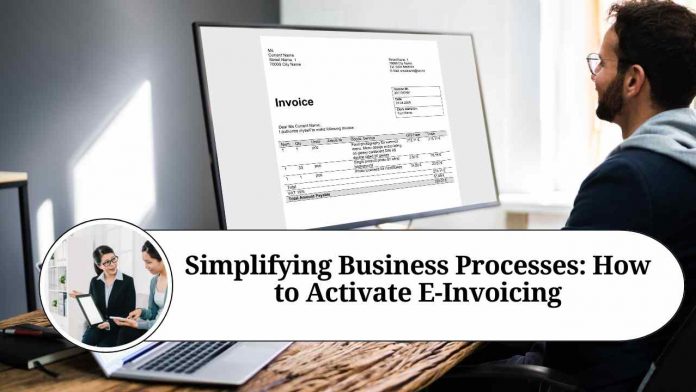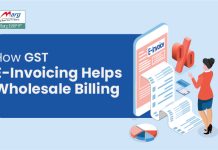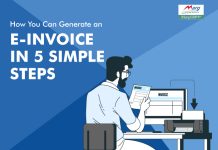Introduction
In today’s rapidly evolving digital landscape, businesses are constantly seeking ways to streamline their operations and enhance efficiency. One area where technology has revolutionized traditional practices is invoicing. Electronic invoicing, or e-invoicing, has emerged as a game-changer, enabling businesses to automate the billing process, reduce errors, and improve cash flow. In this blog post, we will guide you through the process of activating e-invoicing, helping you leverage its benefits and optimize your business operations.
Section 1: Understanding E-Invoicing
Before diving into the activation process, it’s important to grasp the concept of e-invoicing. E-invoicing refers to the electronic generation, exchange, and archiving of invoices between businesses and their clients. Unlike traditional paper-based invoicing, e-invoicing relies on standardized digital formats, ensuring compatibility and seamless transmission between systems.
Section 2: Benefits of E-Invoicing
To motivate you further, let’s explore some key benefits of implementing e-invoicing in your business:
Time and Cost Savings:
E-invoicing eliminates the need for manual data entry, reducing processing time and minimizing the risk of errors. This automation allows your finance team to focus on more strategic tasks, ultimately saving time and reducing costs.
Improved Cash Flow:
With e-invoicing, invoices can be processed and delivered instantly, accelerating the payment cycle. Faster payments improve cash flow, allowing you to reinvest in your business, pay suppliers promptly, and seize growth opportunities.
Enhanced Accuracy and Compliance:
Manual data entry is prone to errors, which can lead to discrepancies and delays. E-invoicing reduces human intervention, ensuring accuracy and compliance with regulatory requirements.
Increased Efficiency: E-invoicing enables seamless integration with your accounting software or enterprise resource planning (ERP) system, eliminating the need for manual data transfer. This integration streamlines your business processes, reducing the risk of duplicate data entry and enhancing overall efficiency.
Section 3: Activating E-Invoicing
Now that you understand the advantages of e-invoicing, let’s dive into the steps to activate it within your business:
Assess Your System Capability: Begin by evaluating your existing software or accounting system’s capability to support e-invoicing. Ensure it meets the necessary technical requirements and can generate and process e-invoices.
Choose a Certified Service Provider: Research and select a certified service provider for e-invoicing. Look for a provider that aligns with your business requirements, offers seamless integration with your existing systems, and ensures compliance with legal and regulatory standards.
Register with the Appropriate Authorities: Depending on your country or region, you may need to register with the relevant authorities to activate e-invoicing. Familiarize yourself with the registration process and any legal obligations associated with e-invoicing in your jurisdiction.
Configure and Integrate: Once you’ve chosen a service provider, work closely with their team to configure the e-invoicing system to align with your business processes. Ensure seamless integration with your accounting or ERP system to enable smooth data exchange.
Test and Validate: Before fully implementing e-invoicing, conduct rigorous testing to ensure that all data fields are correctly mapped, and the system functions as intended. Validate the generated e-invoices against traditional paper-based invoices to guarantee accuracy.
Train Your Team: Provide comprehensive training to your finance and administrative teams on how to use the e-invoicing system effectively. Ensure they understand the process, recognize potential pitfalls, and can troubleshoot common issues.
Conclusion
Embracing e-invoicing can revolutionize your business operations, enhance efficiency, and boost your bottom line. By activating e-invoicing, you unlock the benefits of automation, reduced errors, improved cash flow, and enhanced compliance. Remember to choose a certified service provider, register as required, and ensure seamless integration with your existing systems. By taking these steps, you position your business for success in the digital era while simplifying and accelerating your invoicing processes.
Read more useful content:
Frequently Asked Questions (FAQs)
Q1: What is e-invoicing activation?
A: E-invoicing activation refers to the process of setting up and enabling electronic invoicing within your business. It involves configuring your systems, selecting a service provider, and complying with any legal or regulatory requirements.
Q2: How do I know if my business is eligible for e-invoicing activation?
A: Eligibility for e-invoicing activation varies depending on the country or region. It is important to research and understand the specific criteria set by the authorities in your jurisdiction. In general, most businesses can benefit from e-invoicing regardless of their size or industry.
Q3: What technical requirements should my systems meet for e-invoicing activation?
A: The technical requirements for e-invoicing activation depend on your chosen service provider and the integration needed with your existing software or accounting system. Common requirements include compatibility with industry-standard e-invoicing formats, data encryption capabilities, and secure data transmission protocols.
Q4: How do I choose the right e-invoicing service provider?
A: When selecting an e-invoicing service provider, consider factors such as their experience, reputation, range of services offered, compatibility with your existing systems, customer support, and compliance with legal and regulatory standards. Research multiple providers, read reviews, and compare their features before making a decision.
Q5: Do I need to register with any authorities for e-invoicing activation?
A: Depending on your country or region, you may need to register with the appropriate authorities to activate e-invoicing. Some jurisdictions require businesses to obtain specific identification numbers or certifications. It is crucial to understand and fulfill any registration obligations as mandated by the relevant authorities.
Q6: How long does it take to activate e-invoicing?
A: The timeline for e-invoicing activation varies based on several factors, including the complexity of your systems, the chosen service provider’s implementation process, and any registration requirements. It could take a few weeks to a few months, depending on these factors. Timely communication and collaboration with your service provider can help expedite the activation process.
Q7: How can I ensure data accuracy and compliance with e-invoicing?
A: To ensure data accuracy, it is essential to configure your e-invoicing system correctly and map the data fields accurately. Regular testing and validation of e-invoices against traditional invoices can help identify and rectify any discrepancies. Compliance with legal and regulatory standards can be ensured by selecting a certified service provider and staying up-to-date with any changes in the e-invoicing regulations.
Q8: Do I need to train my team after activating e-invoicing?
A: Yes, training your finance and administrative teams on using the e-invoicing system is crucial. Provide comprehensive training that covers the e-invoicing process, system functionalities, troubleshooting common issues, and ensuring data integrity. Training will help your team adapt to the new process, use the system effectively, and maximize the benefits of e-invoicing.




















